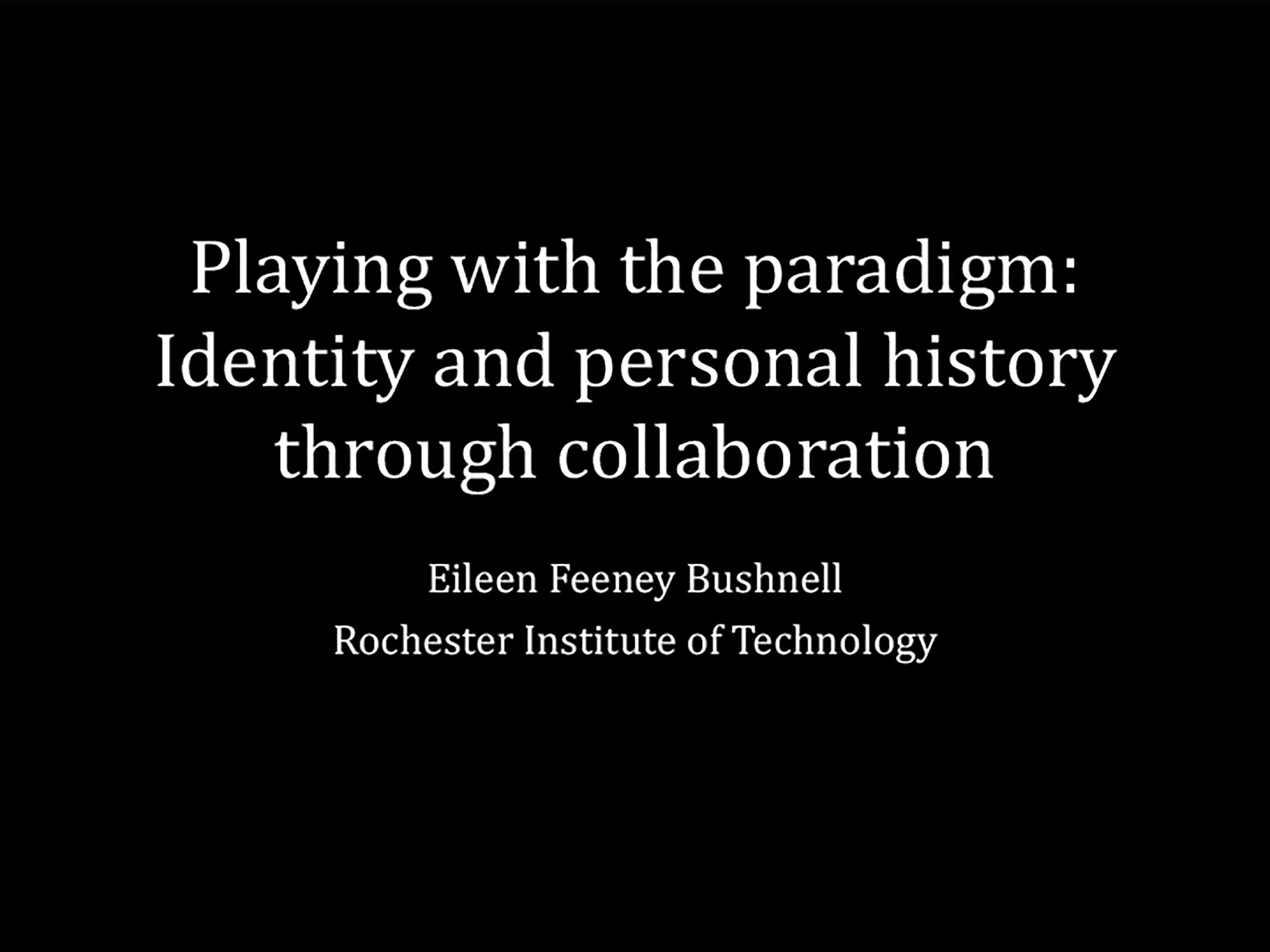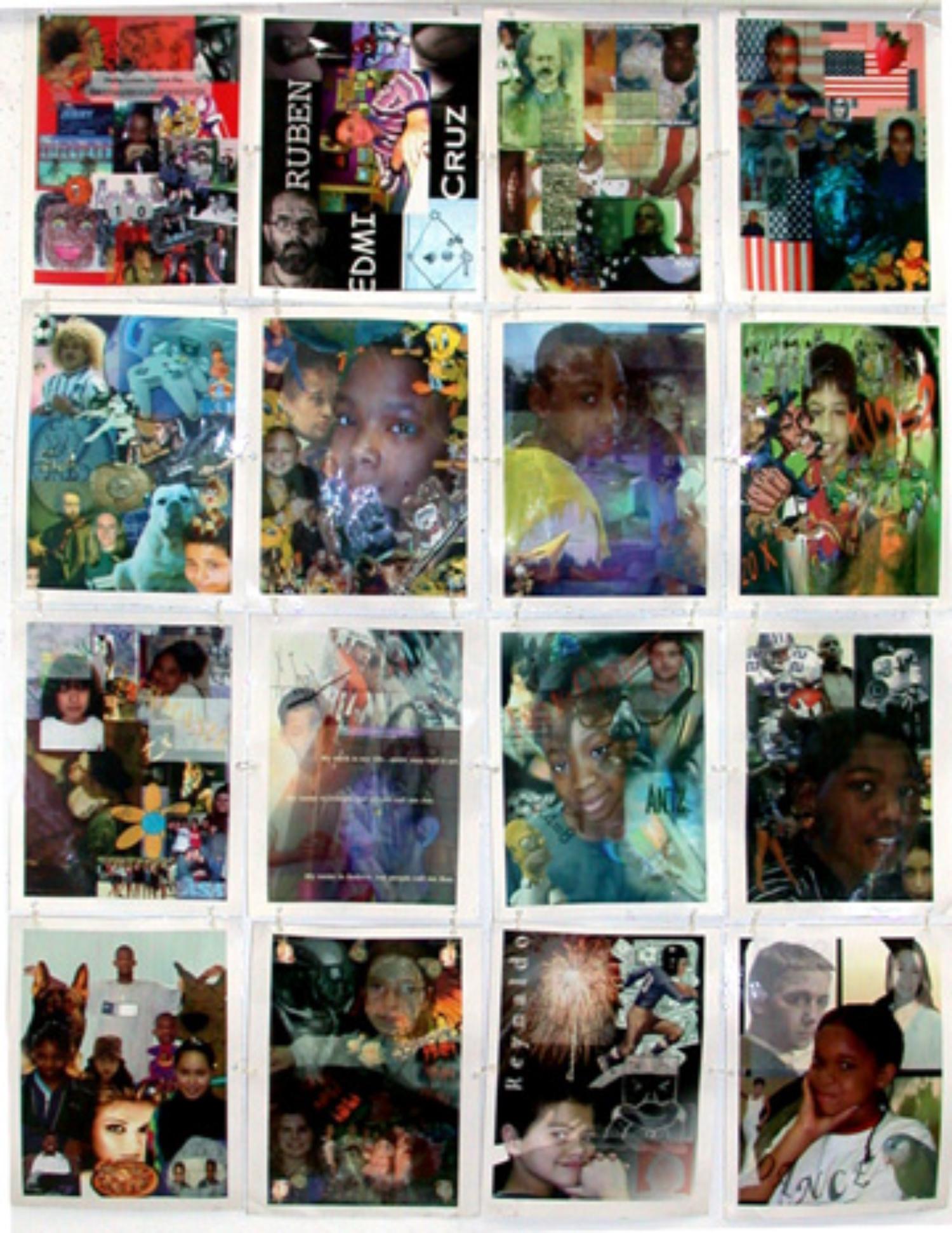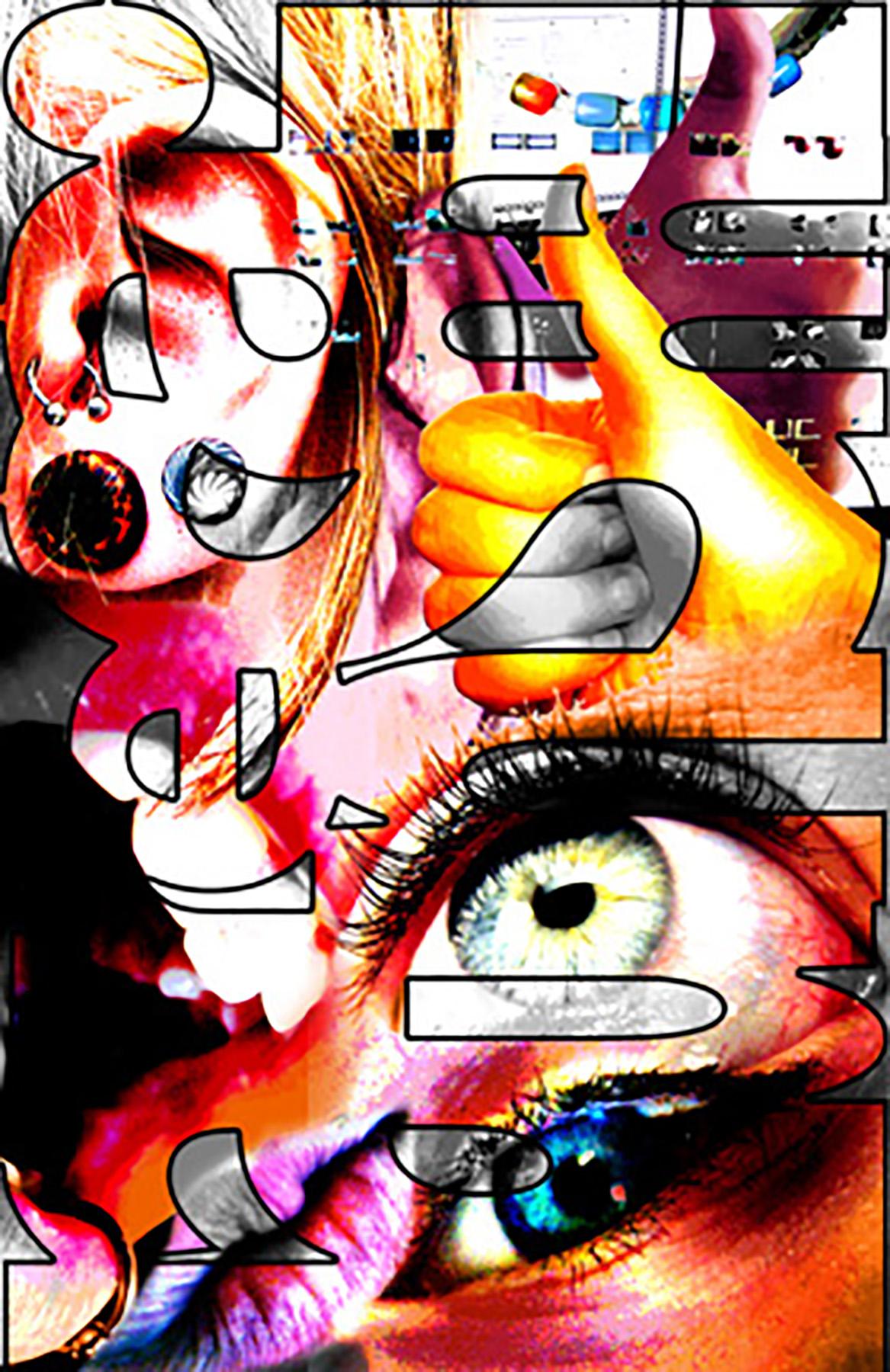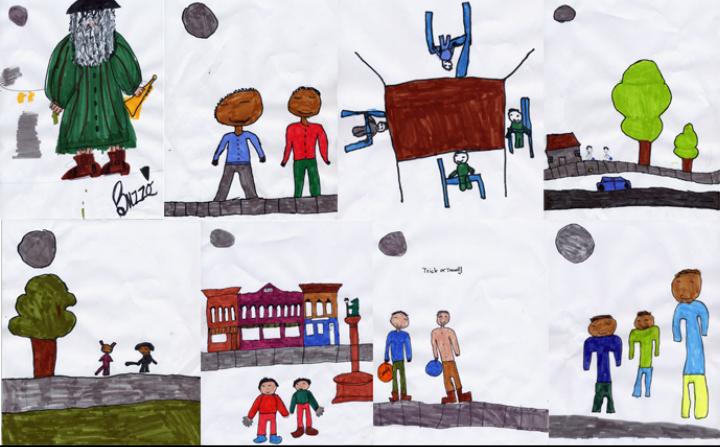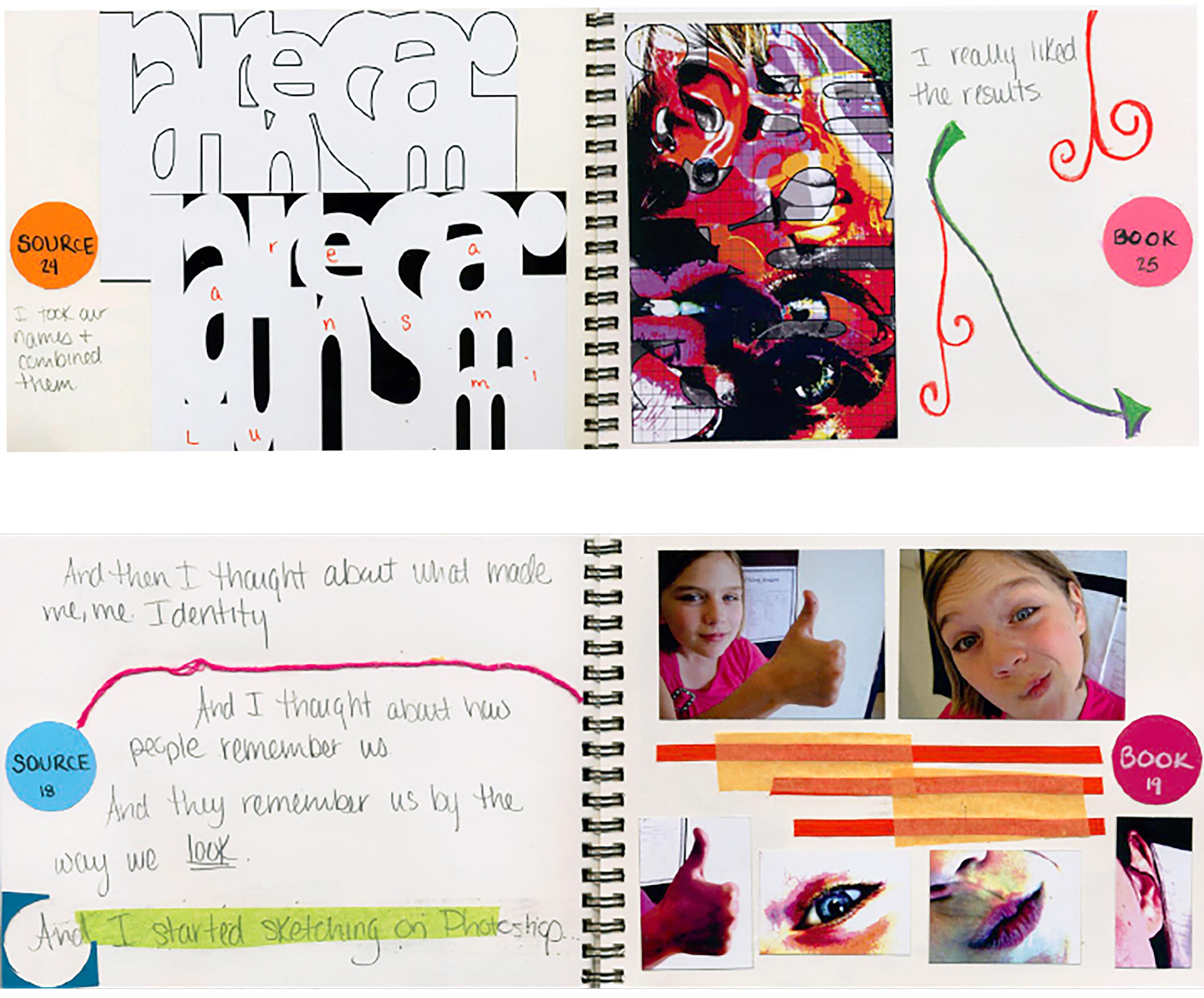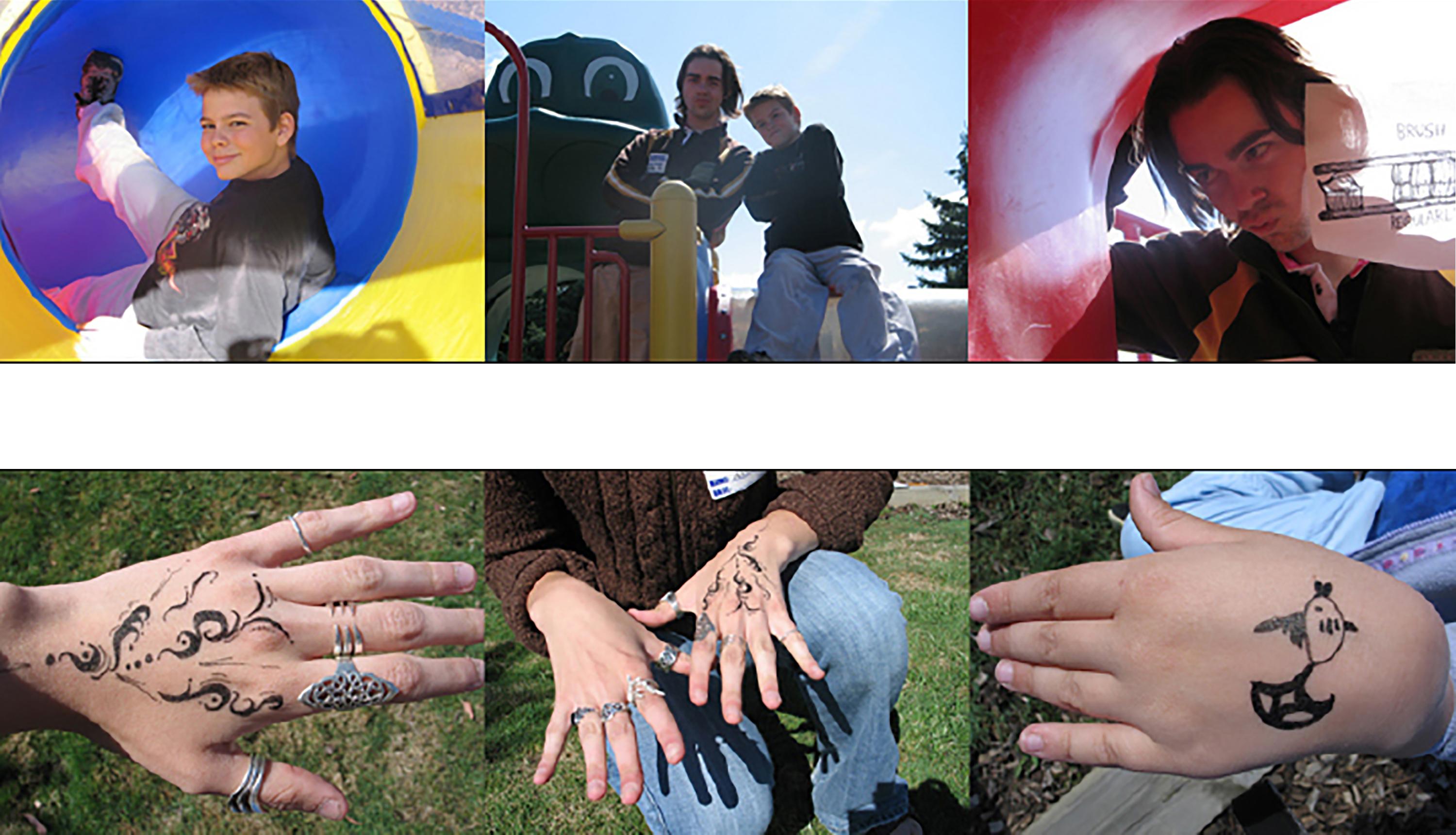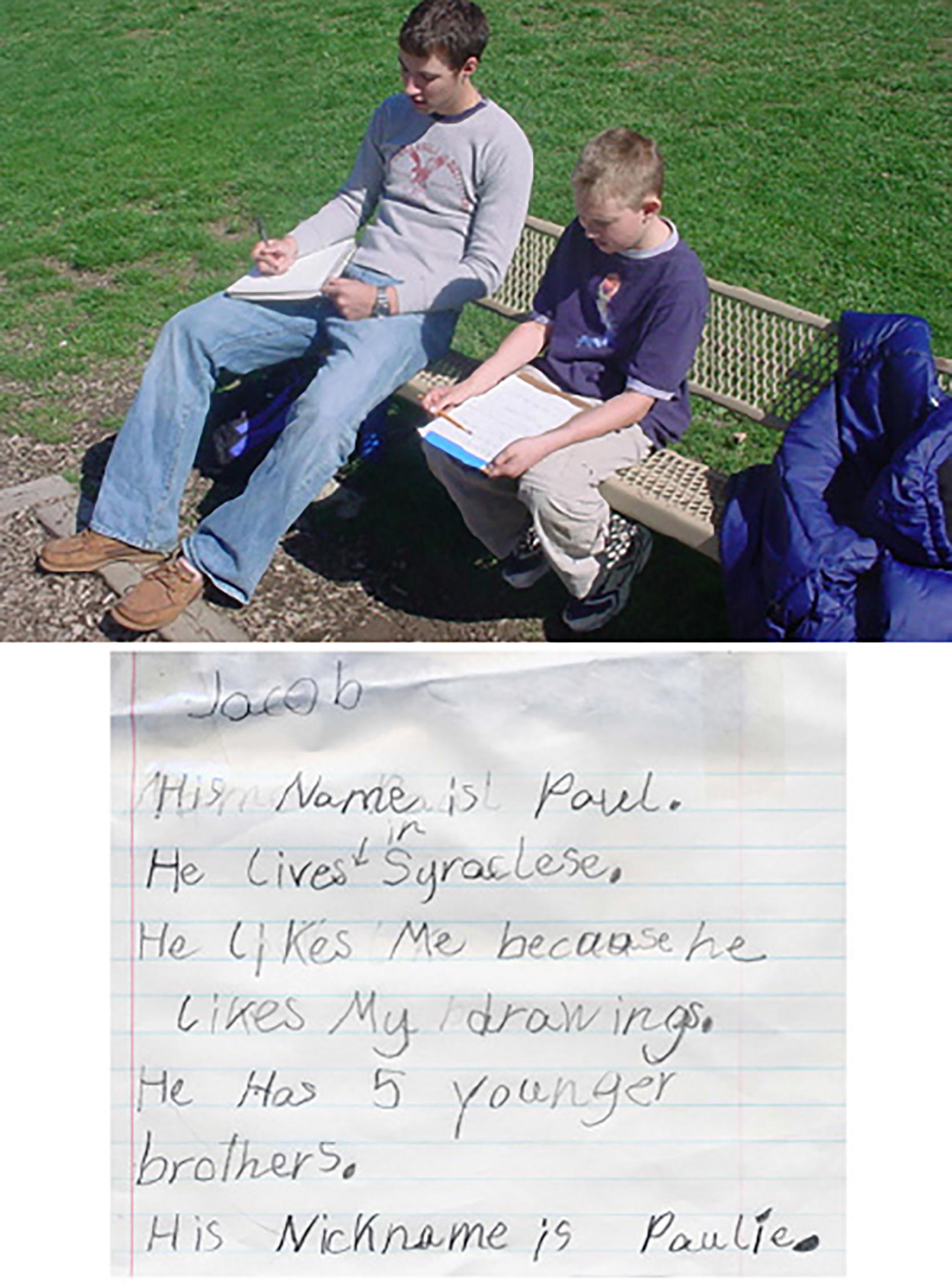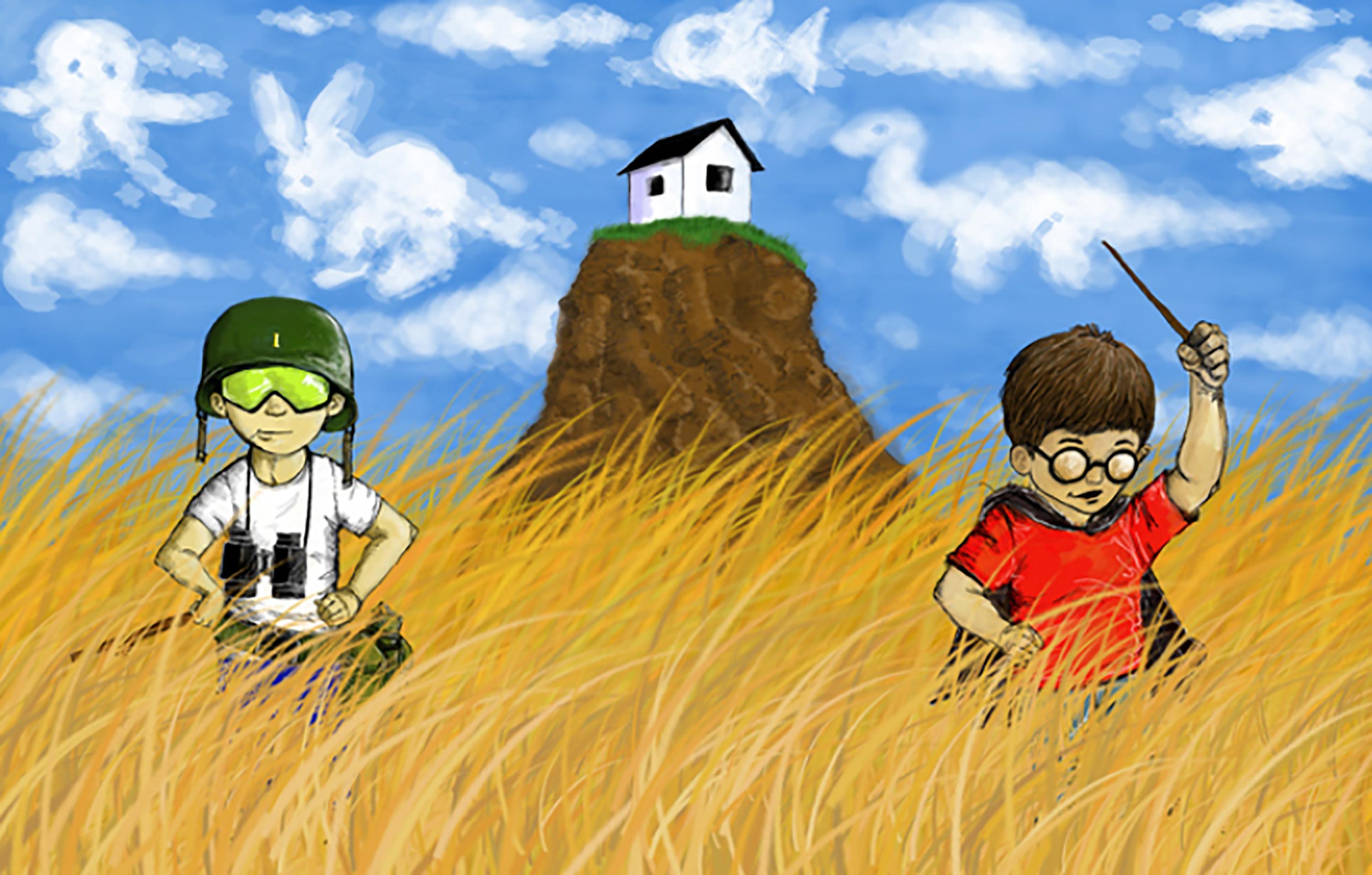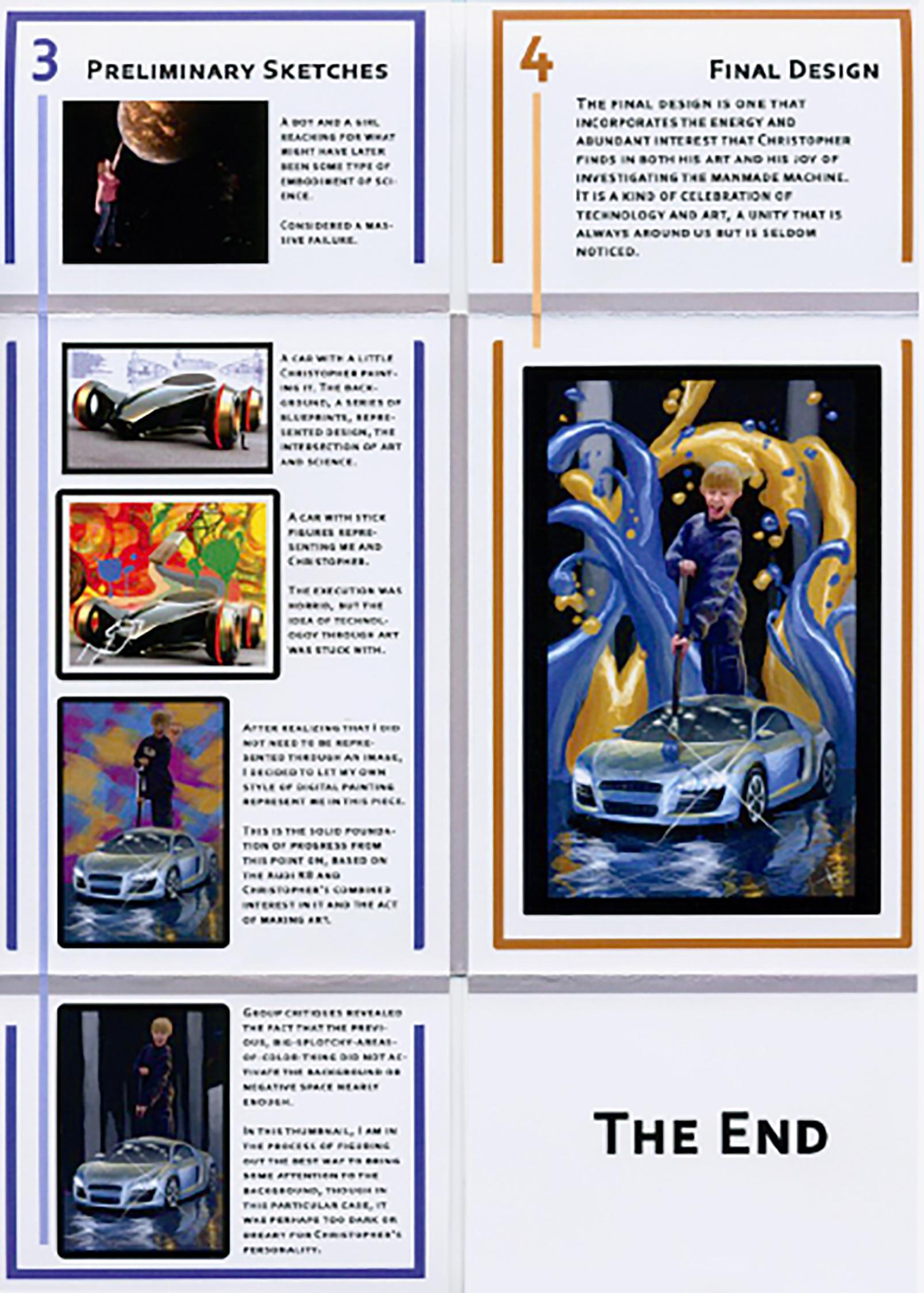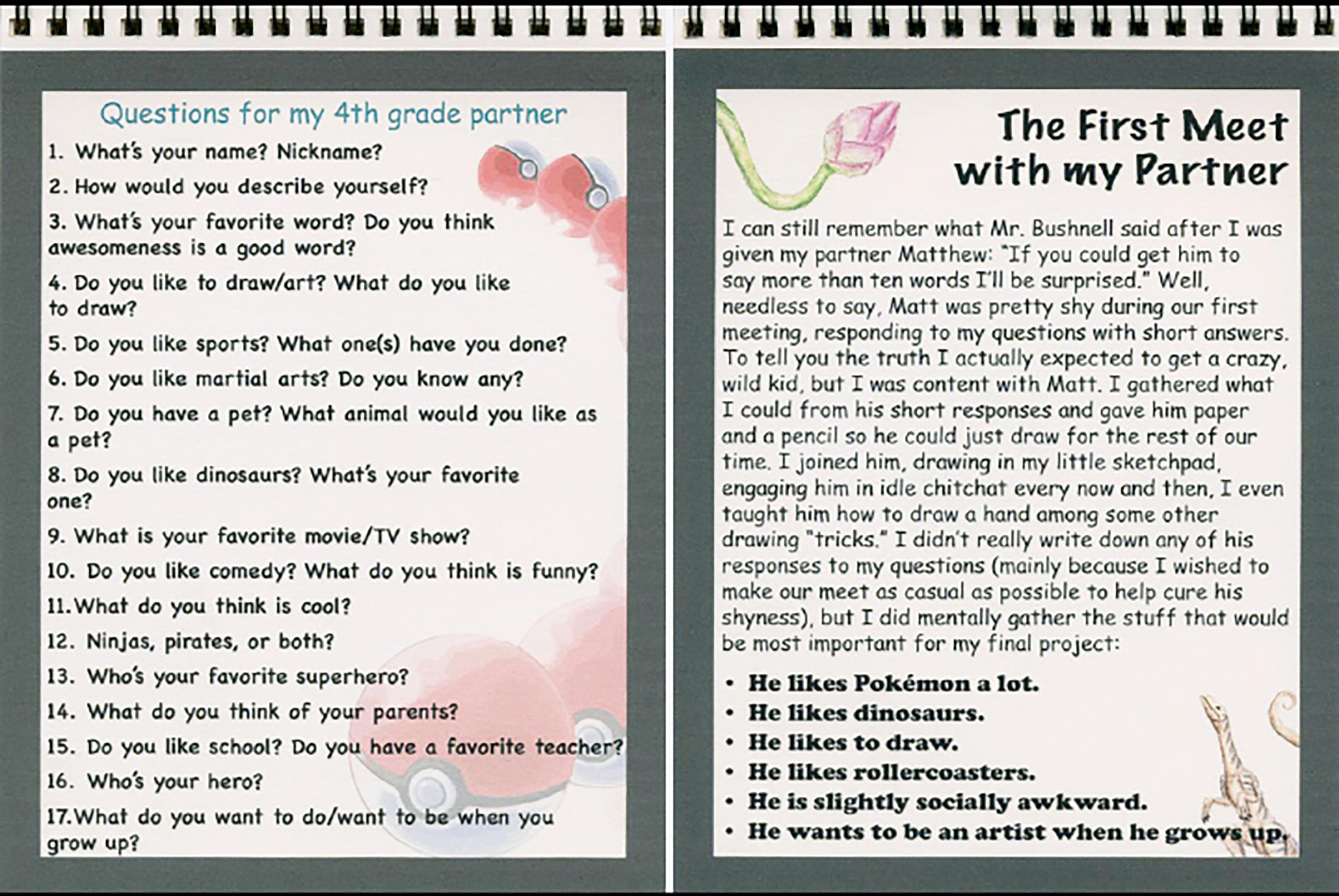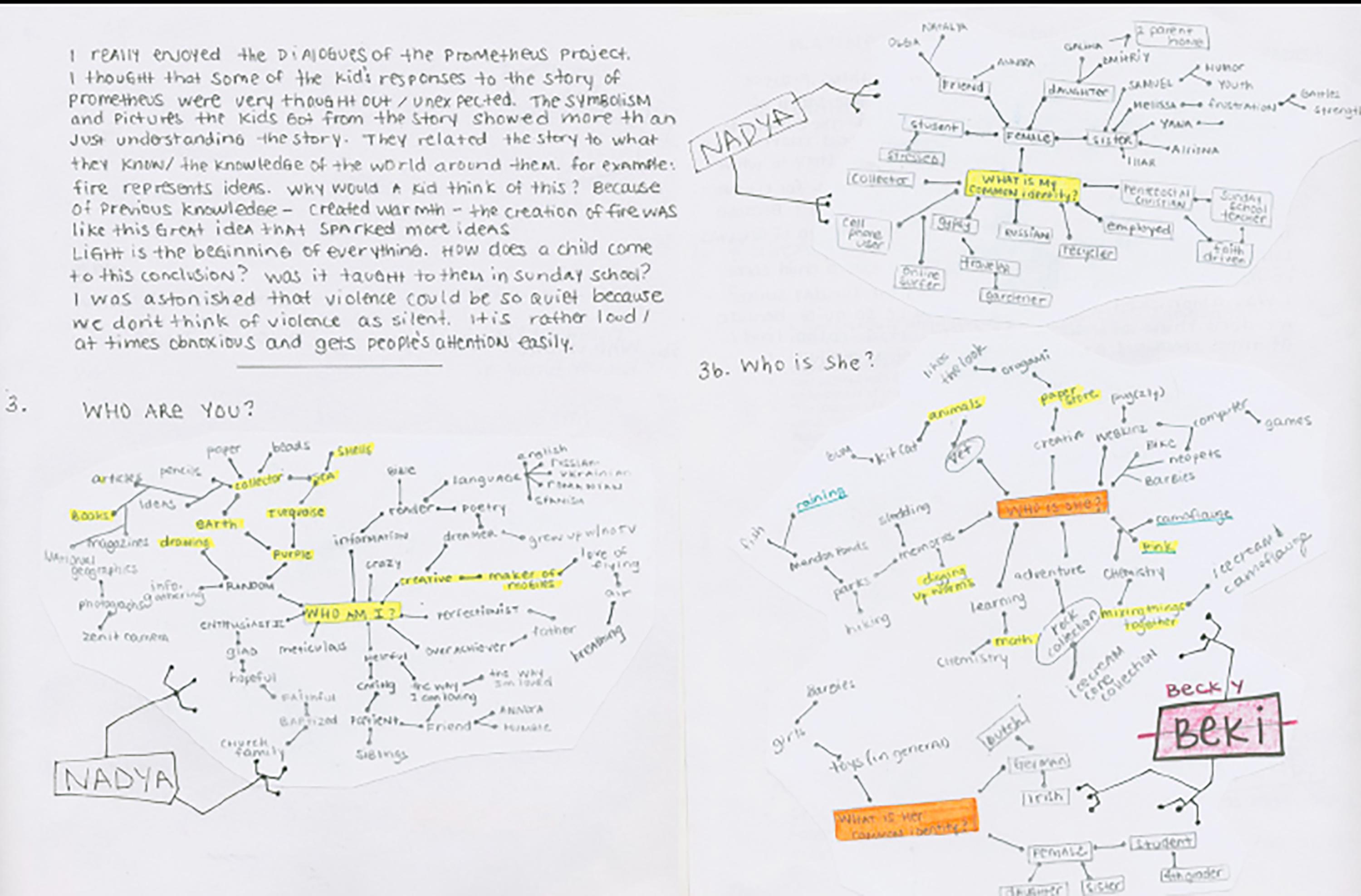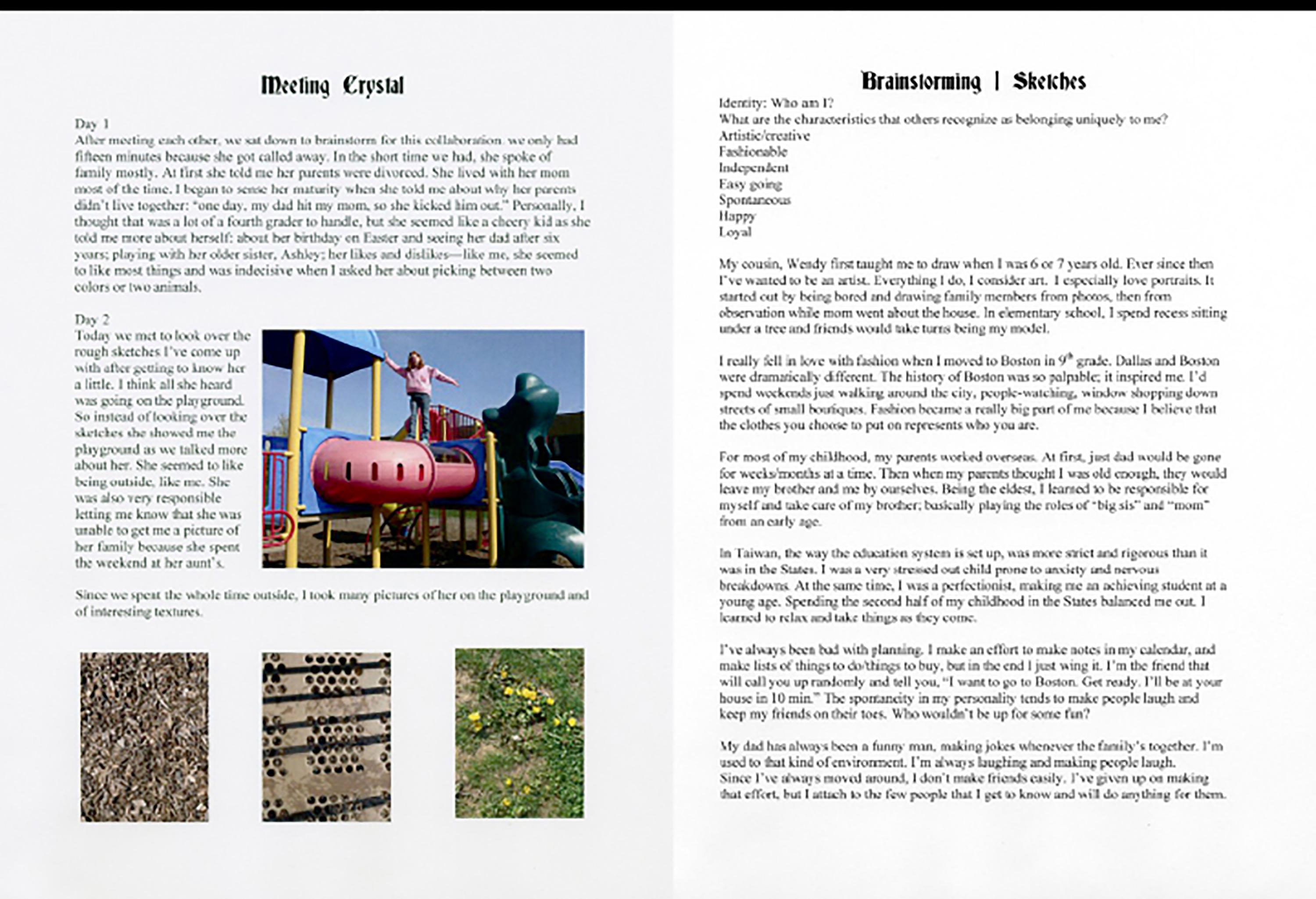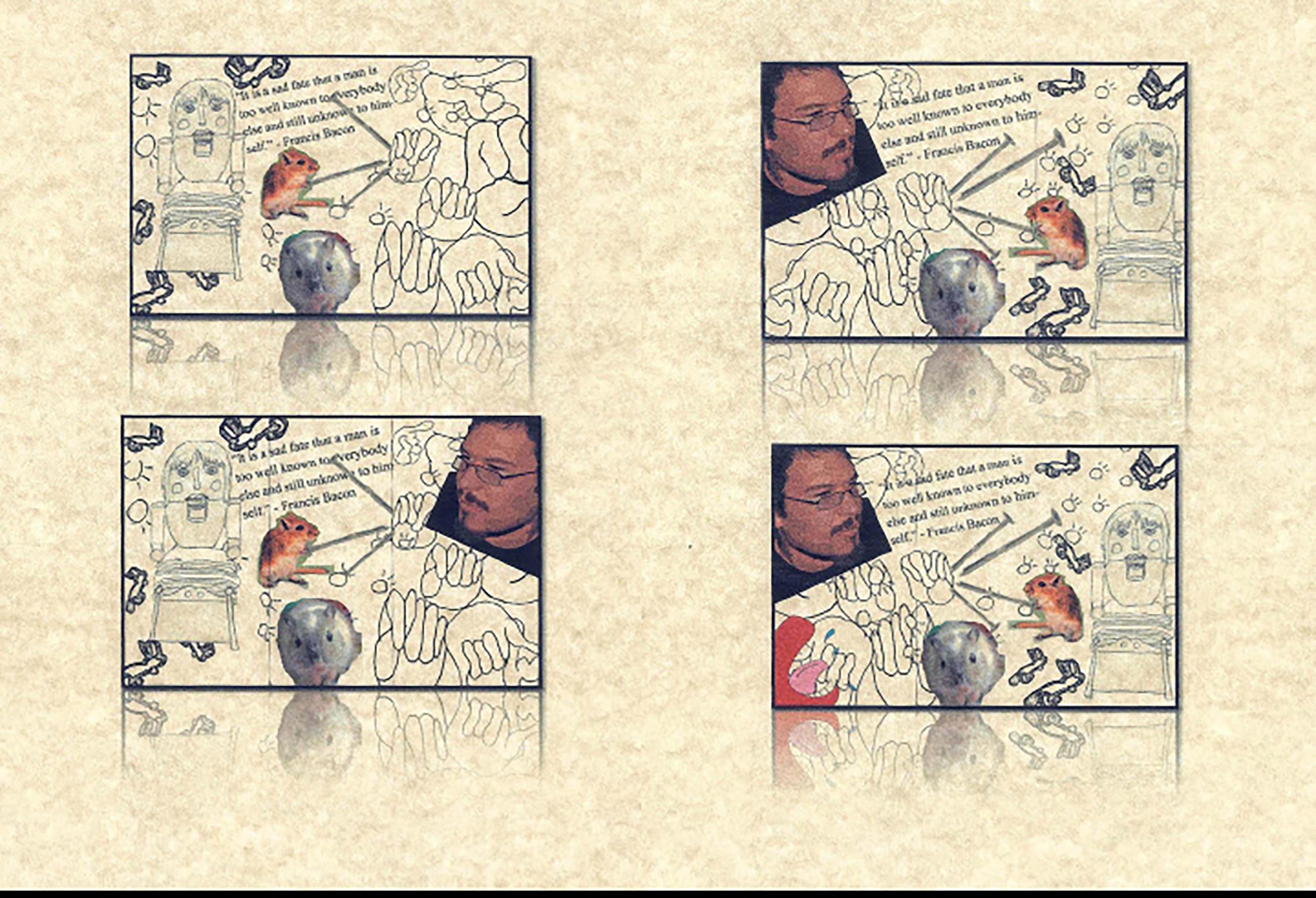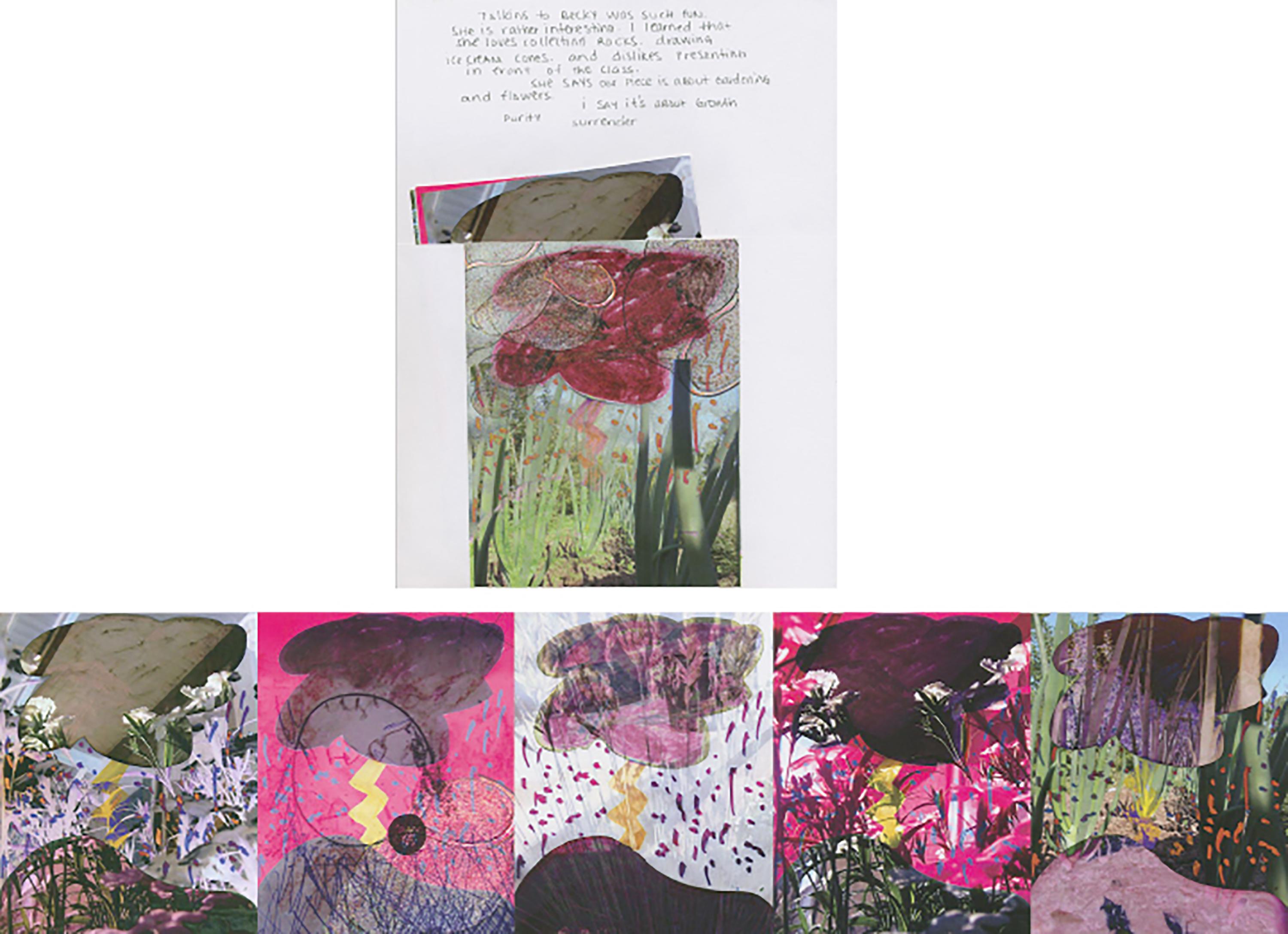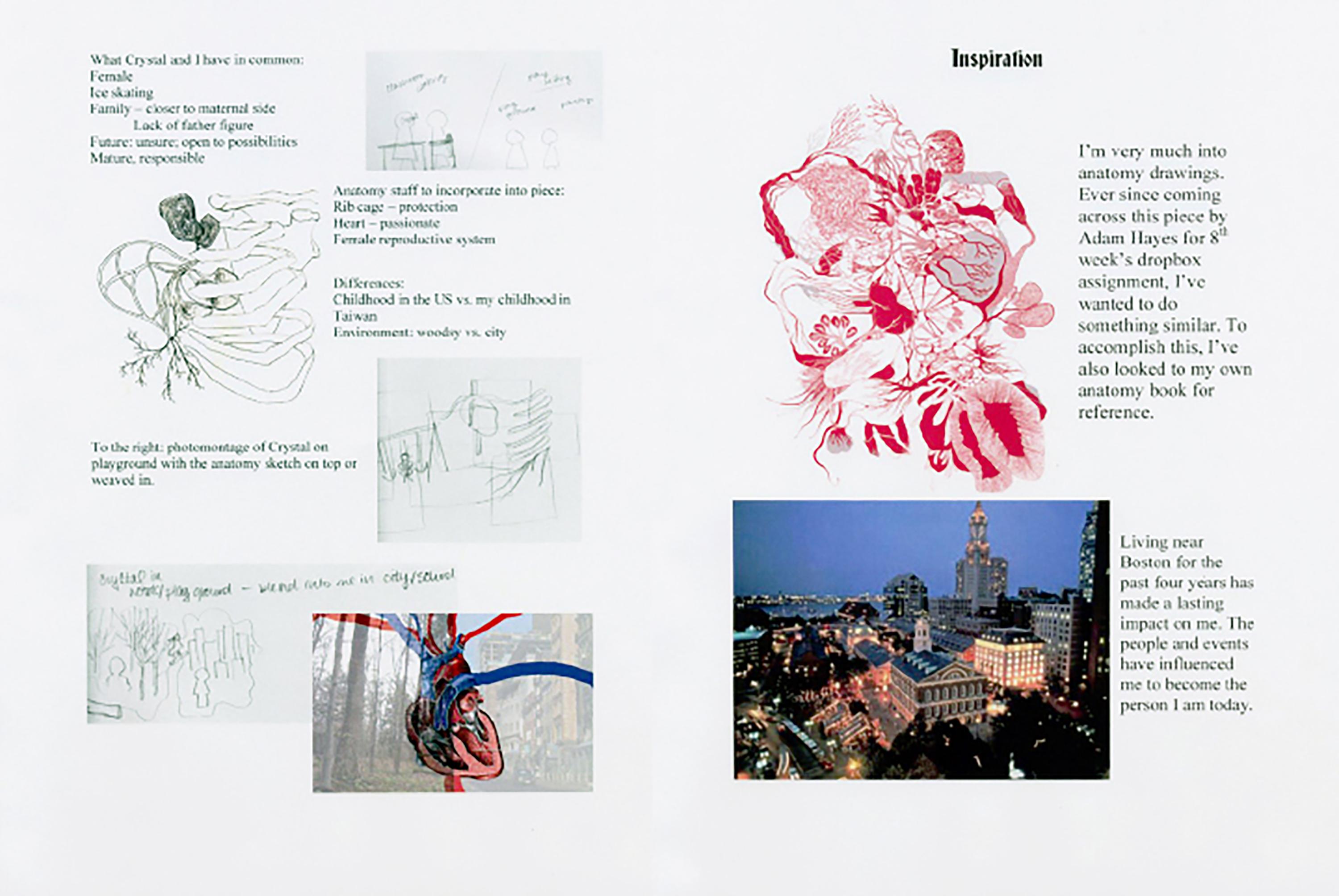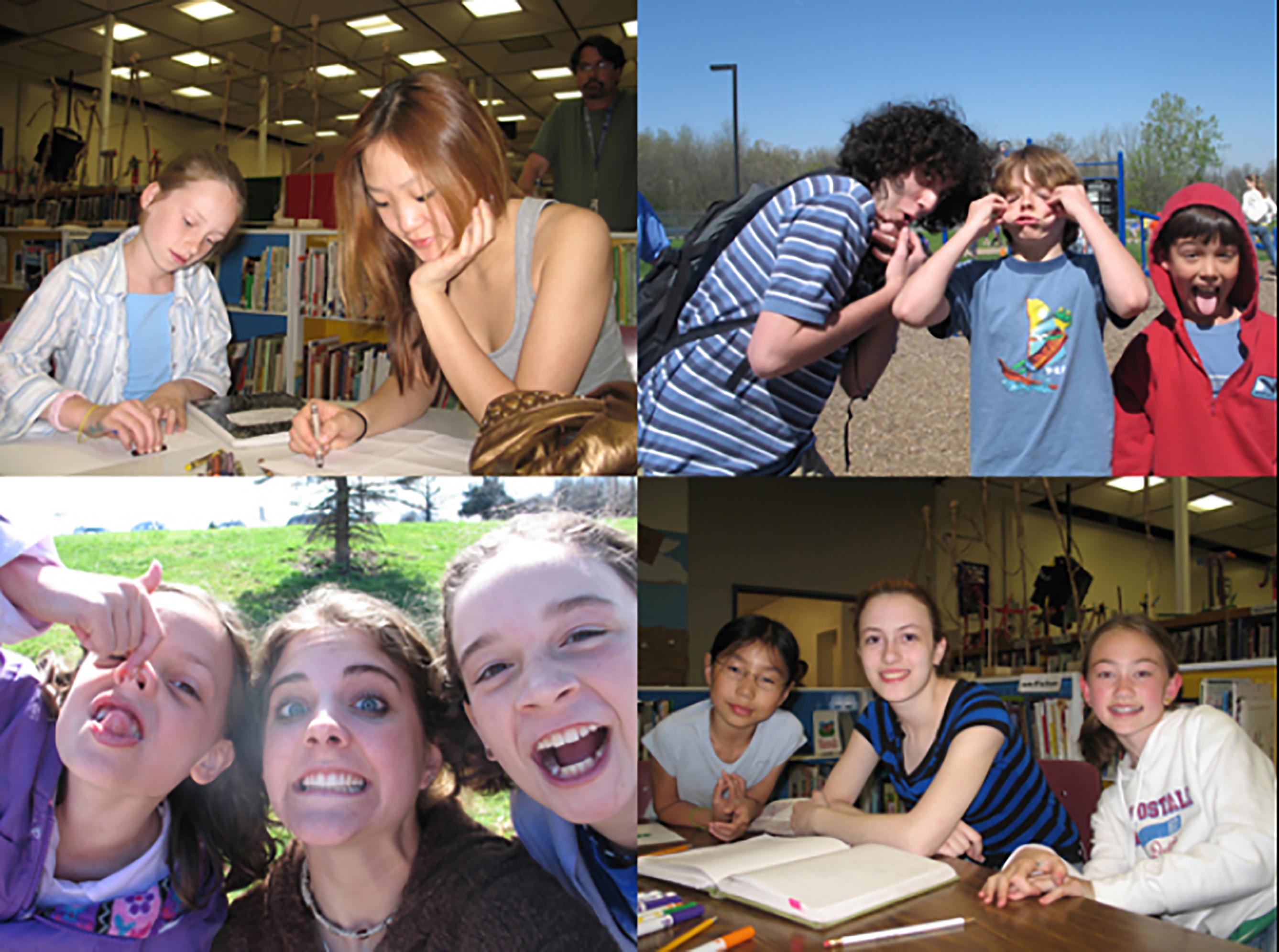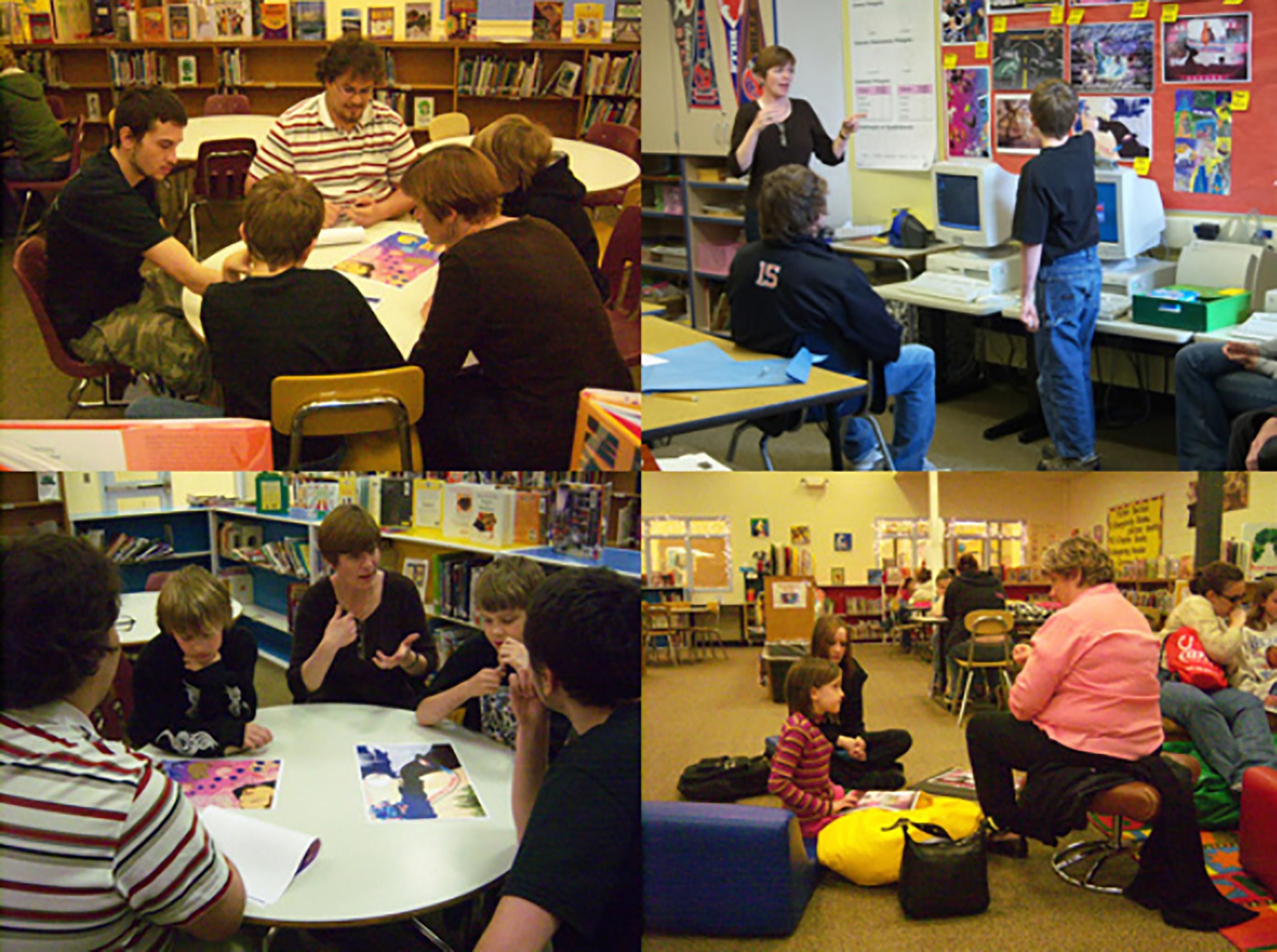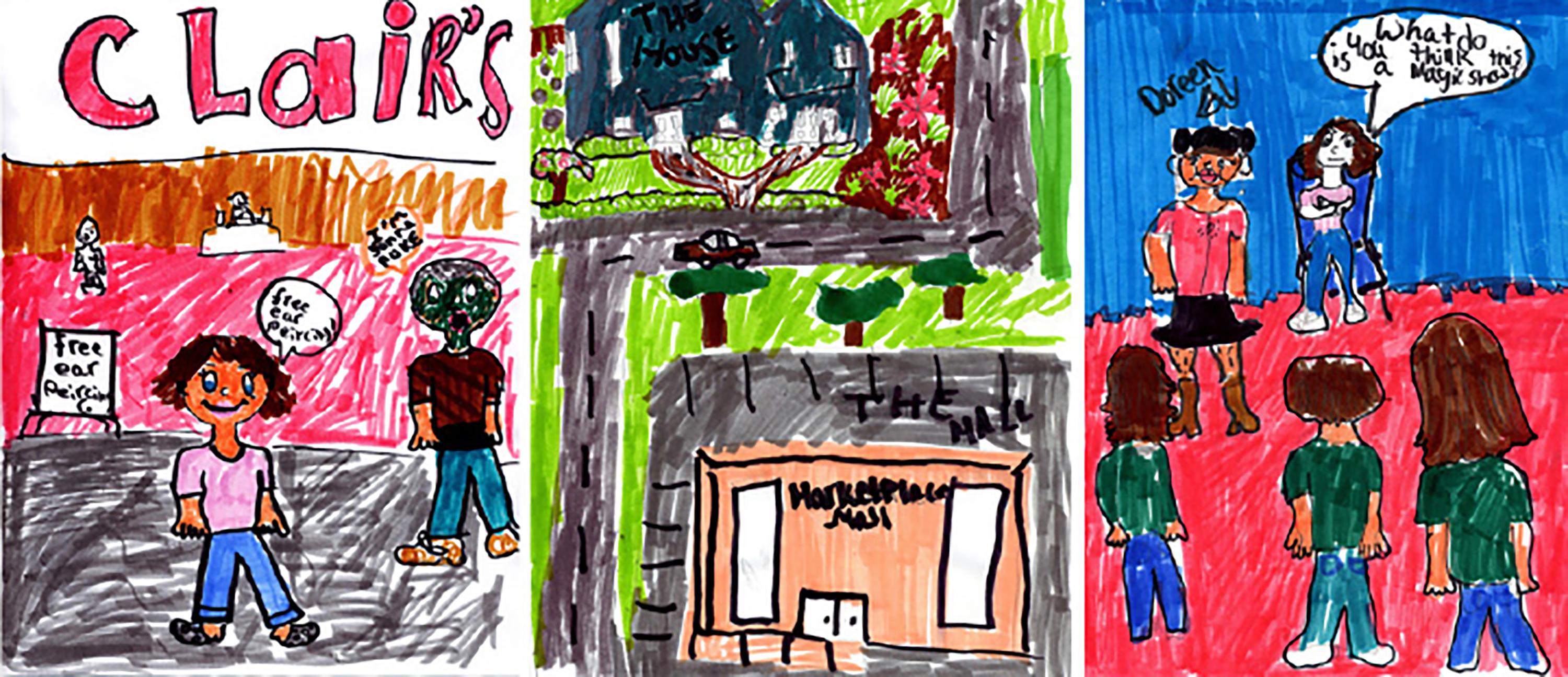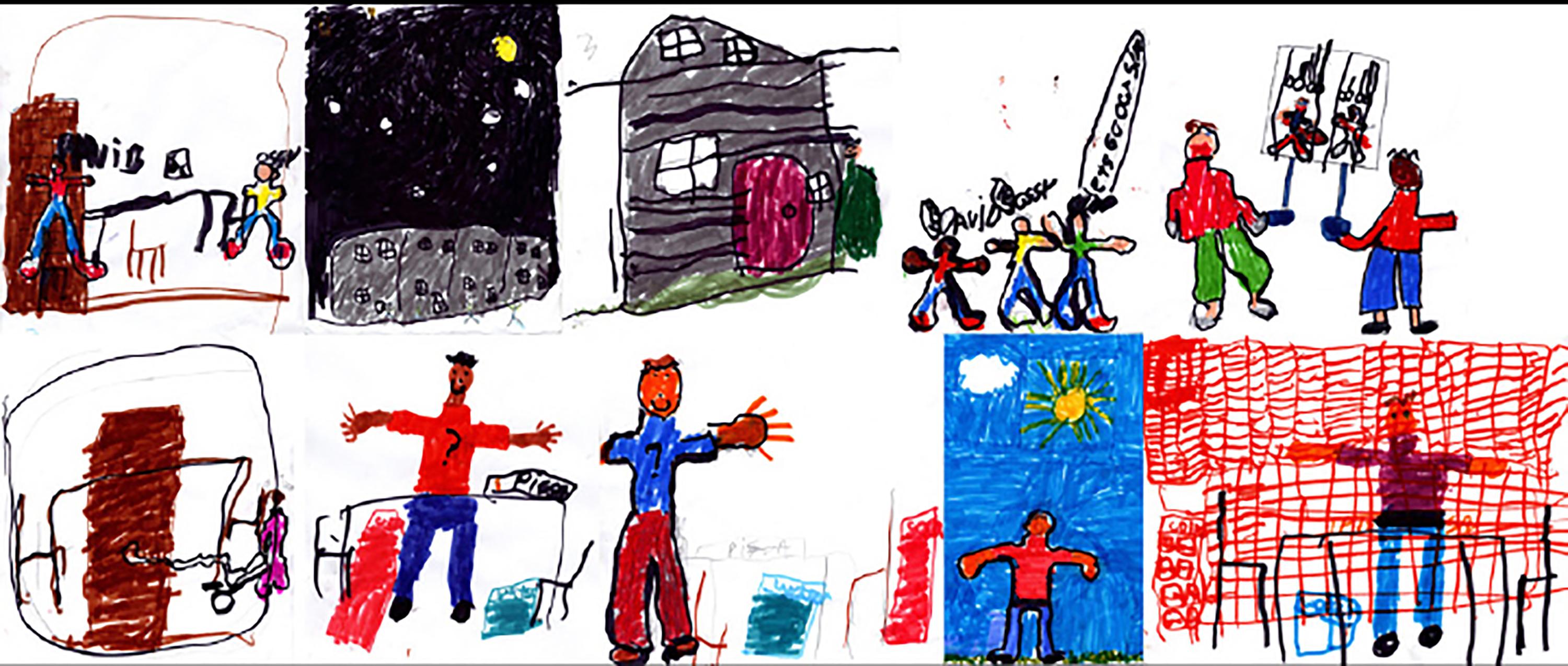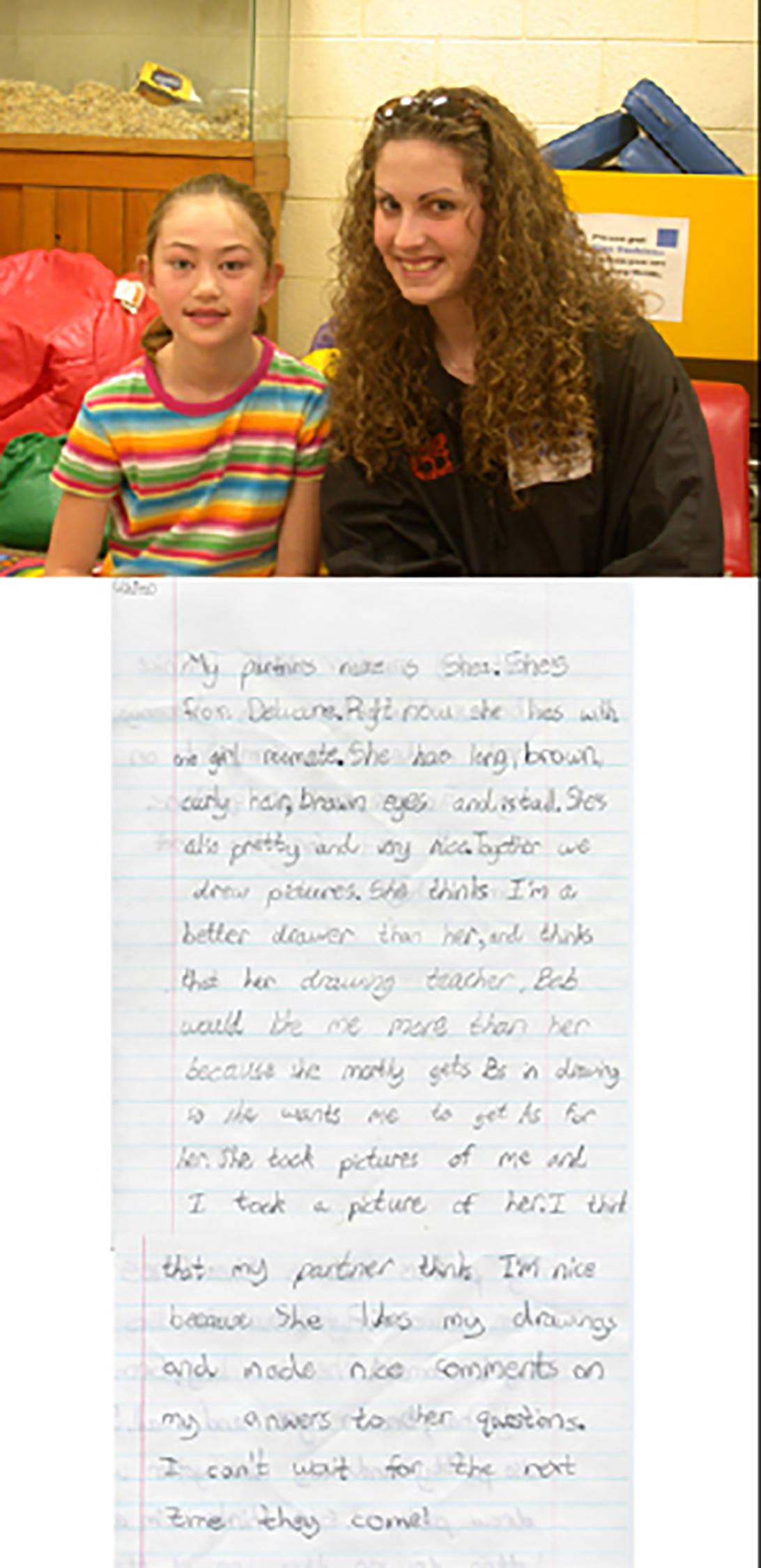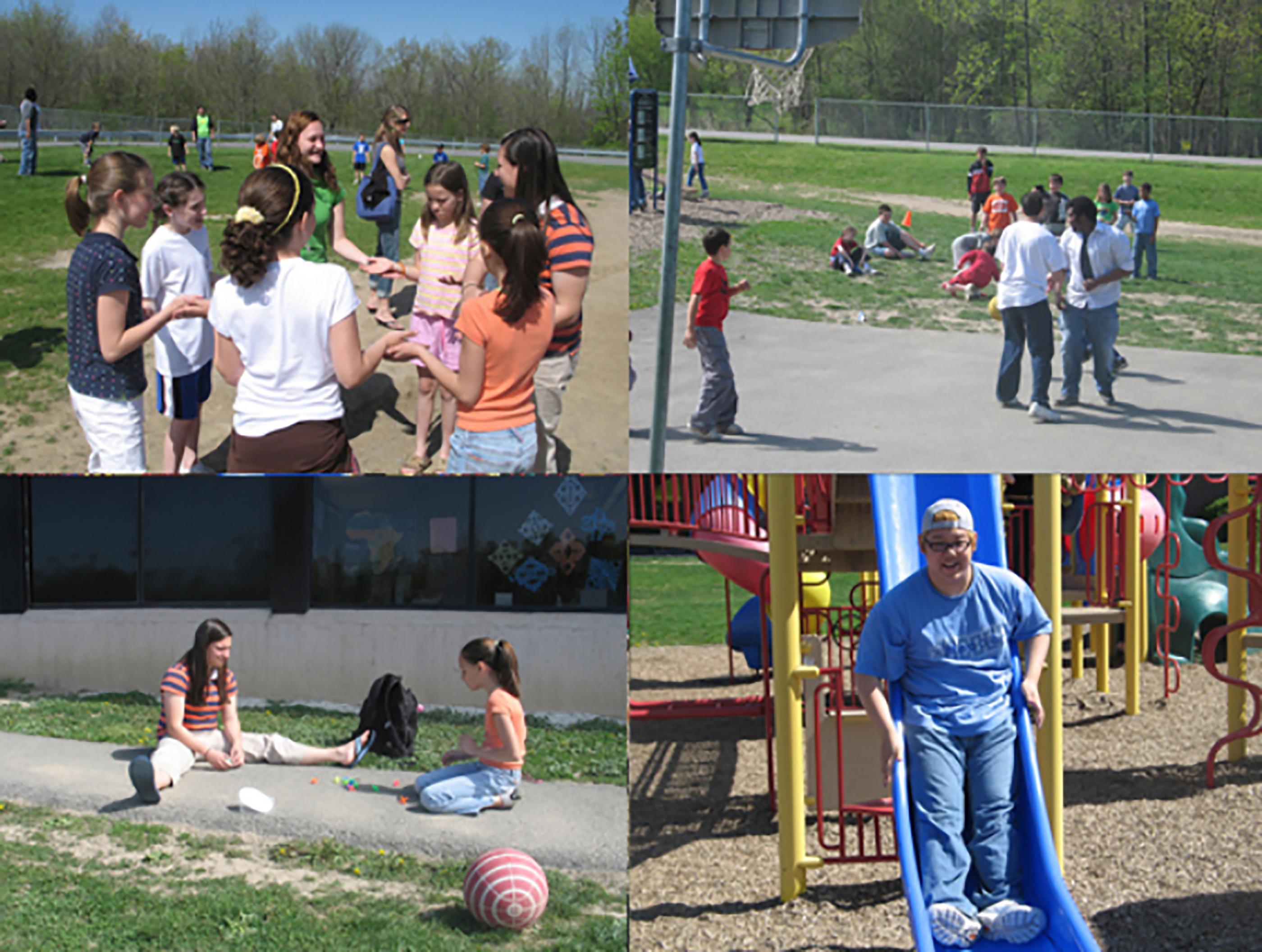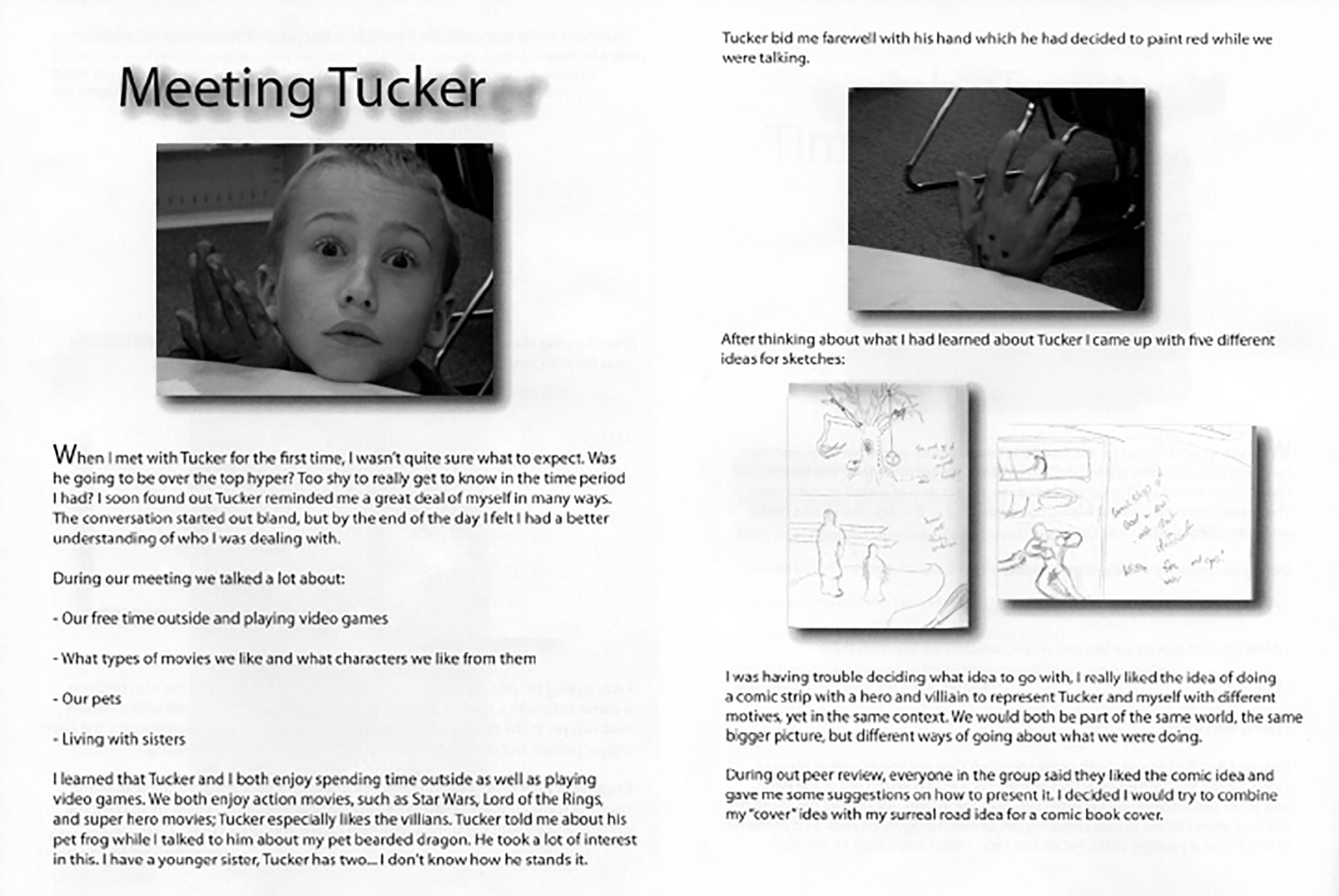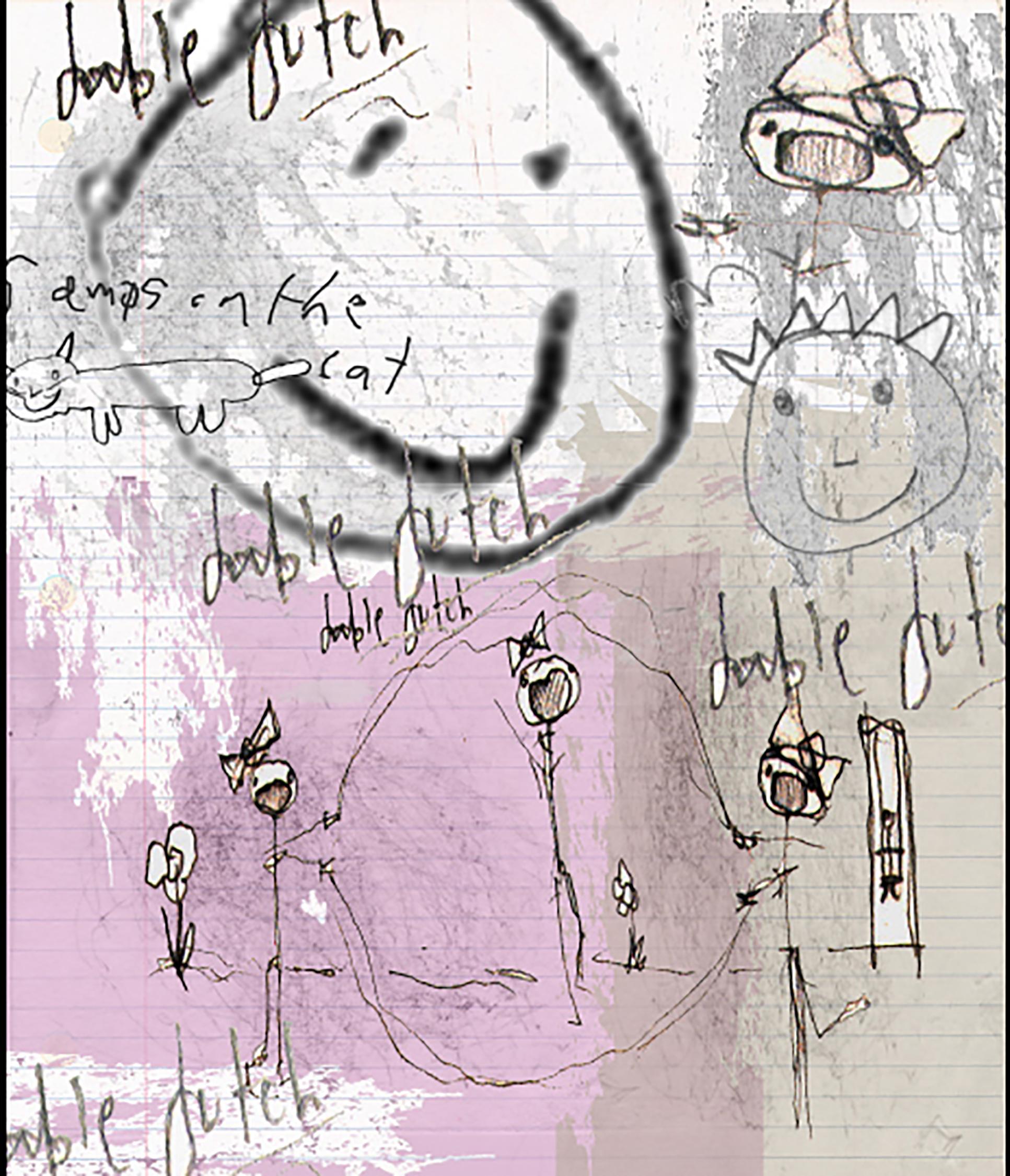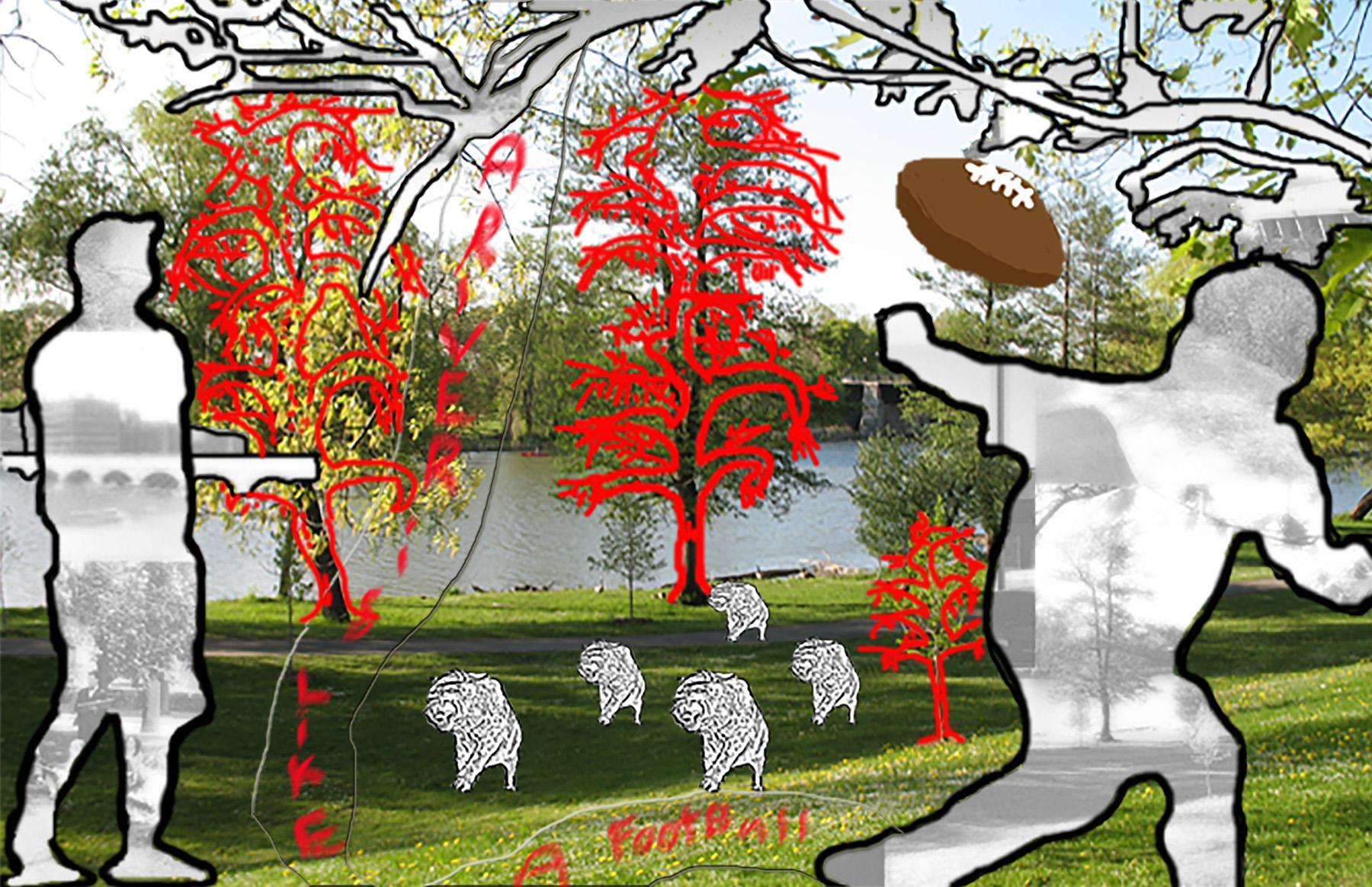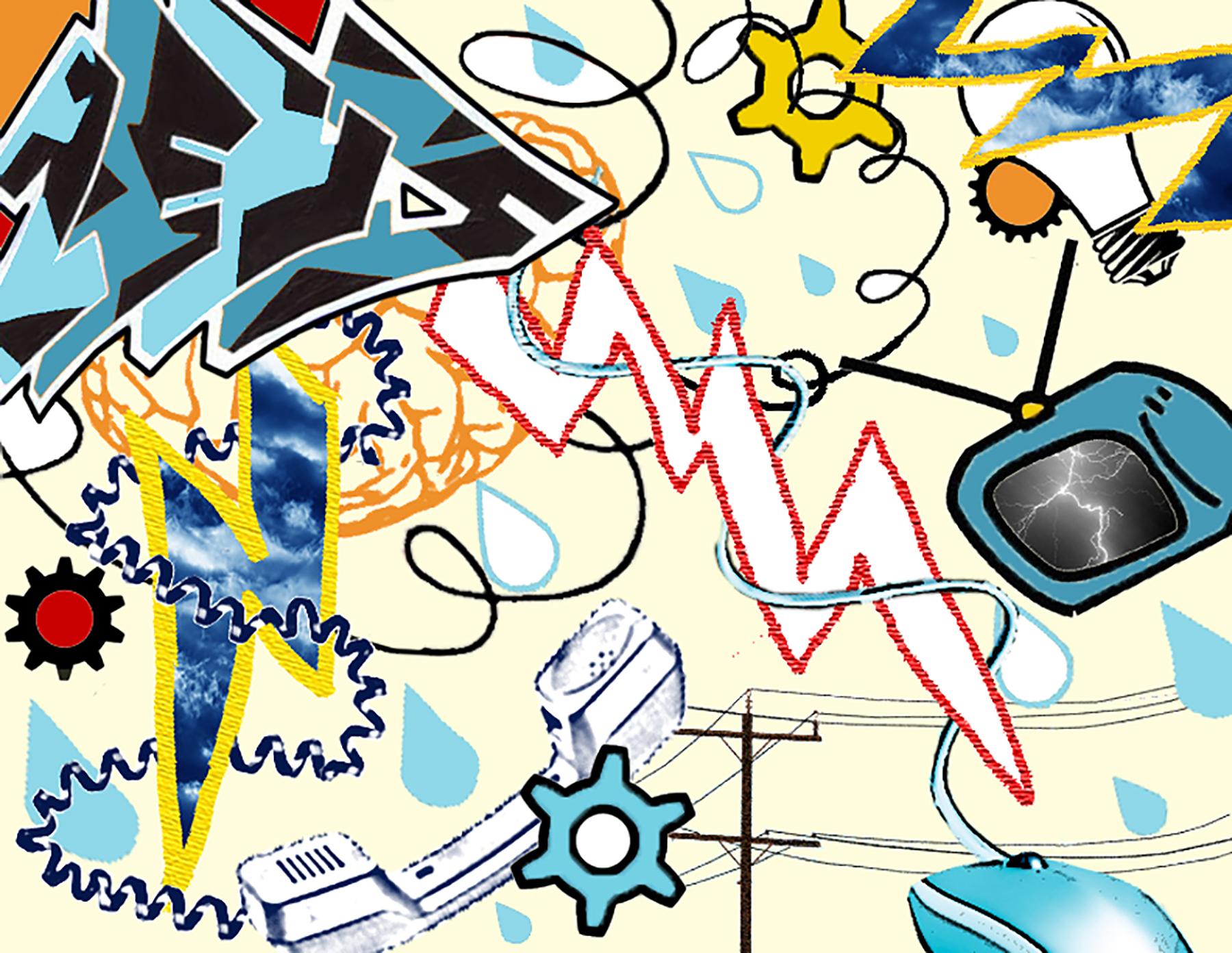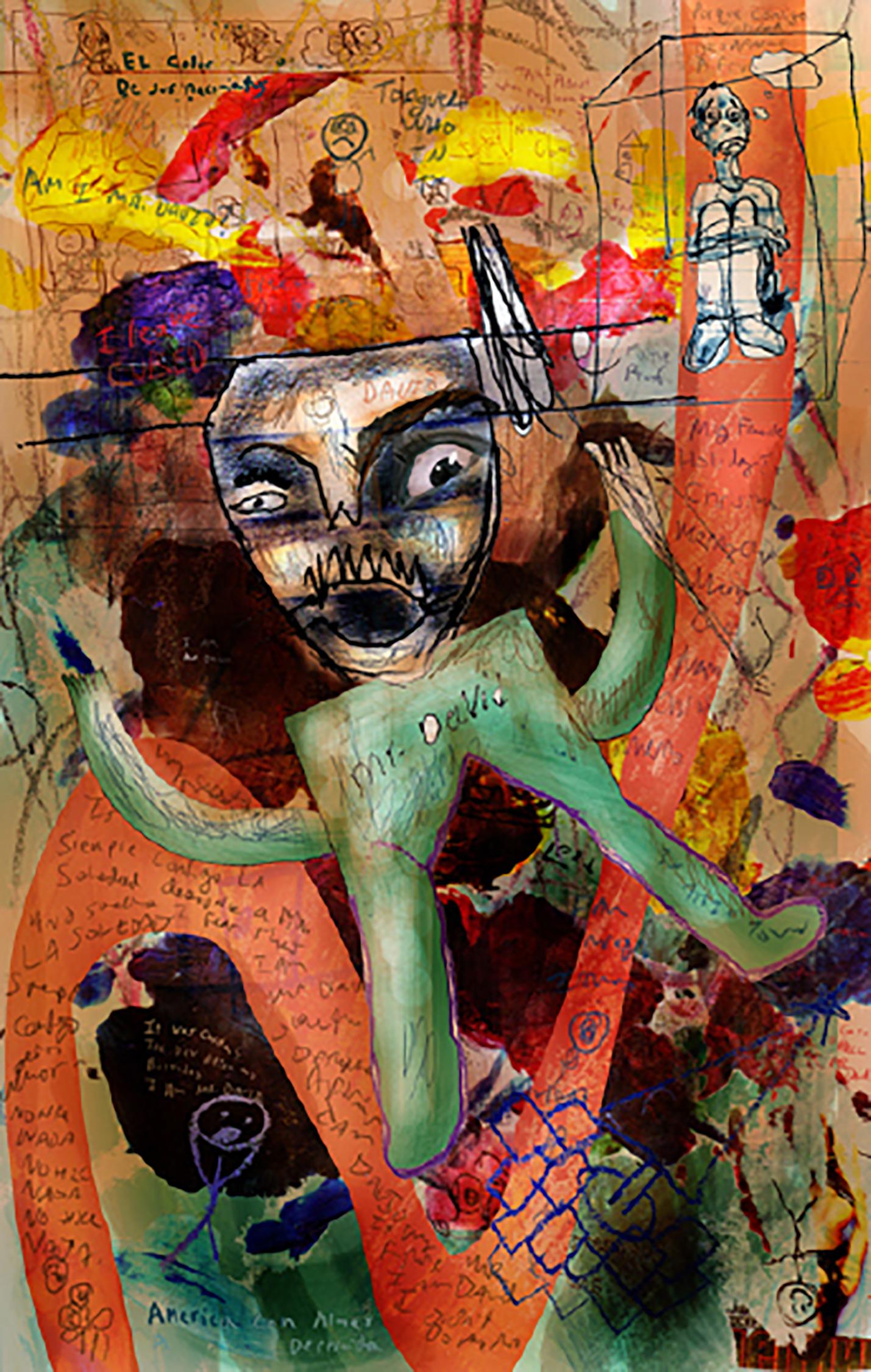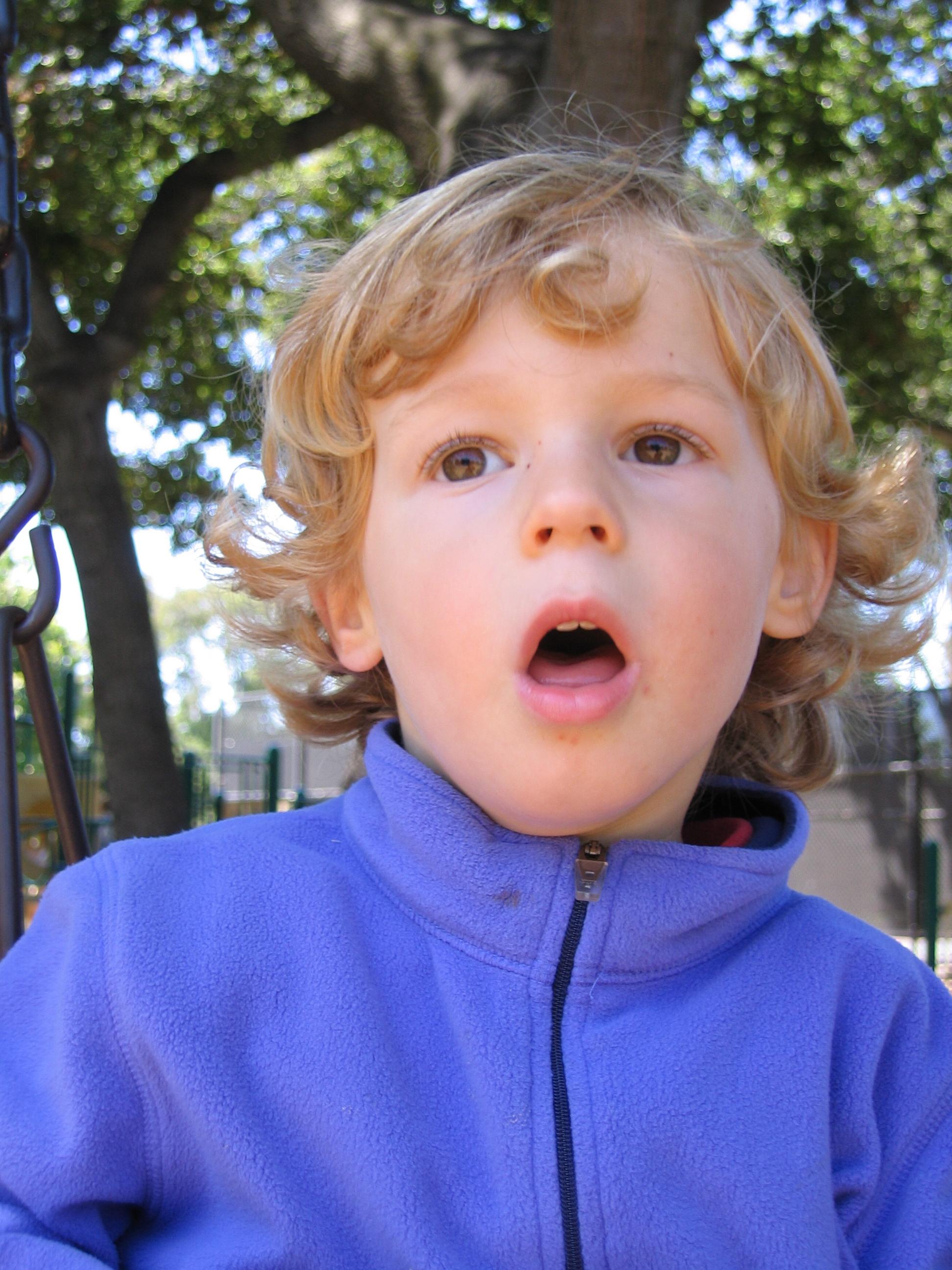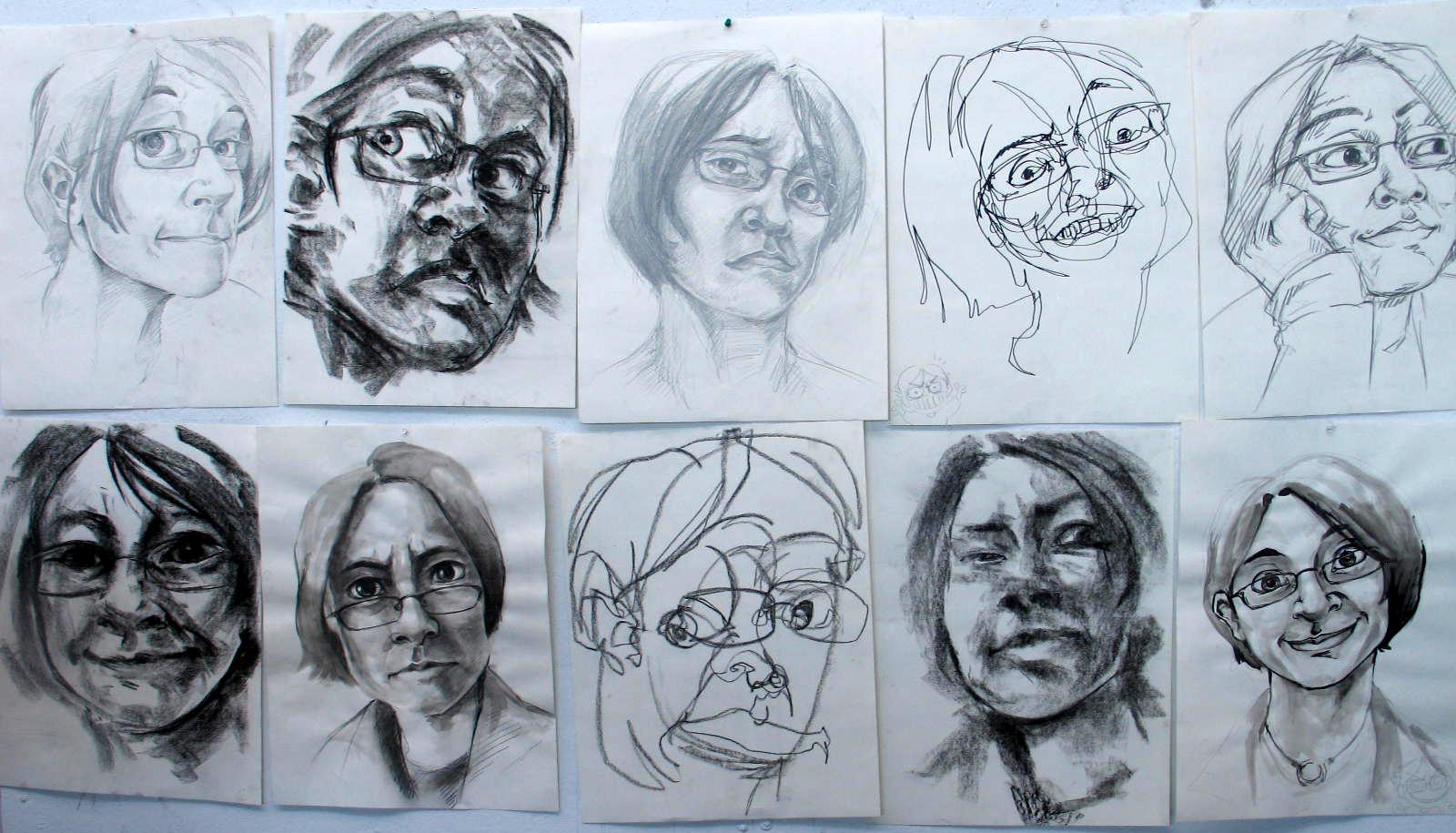Interdisciplinary Initiative: Community Collaborative
Overview of an elementary school student collaboration that was run as an aspect of my 2D Design class over the course of ten years.
Over the course of ten years, I organized collaborative projects between an elementary school and students in my 2D Design classes.
My collaborator was my husband, who had become an elementary school teacher who would teach in an inner city school and a suburban school over the 10 year time frame.
From the Foundation students' perspective this was a culminating project for their first year 2D Design courses. Over this year, they have accumulated the skills and experience to work effectively with digital applications. More importantly, they have experience to mine conceptual potential of design problem.
This project dealt with opposing models for working and thinking including: Analytical and expressive, additive and reductive and personal and collaborative.
The project interjects personal developmental processes with peer review and audience interaction and affords opportunity to work with information generated through dialogue rather than assignments.
It also provided the opportunity to physically and psychologically explore the realities and expectations of life at different points in time.
For elementary students this nteraction also provided the opportunity to explore identity externally.
For college students it provided the opportunity to explore the formation of identity by visiting the past.
It also allows them to formally addresses the application of foundations concepts, issues and practices,
- Allows for the development of a design brief
and for college students, it also addressed writing across the curriculum Integrating process and production.
From the elementary students' perspective, this interaction addressed alternative means of solving problems and representing information.
- Over time – more opportunity to jump start interaction on both ends
Elementary students worked simultaneously on pictorial narratives of the community and their interaction within it.
It also allowed for the expansion of writing objectives within the primary school curriculum. Projects initially evolved out of writing curriculum of elementary school students and involved the exploration of identity through narratives of personal history where the center of interaction was dialogue and the visual and conceptual information that emerged from within the interaction.
For elementary students, forming bonds with others especially those perceived as adults is vital in establishing trust and a sense of self confidence which then helps them deal with outside world and the broader community.
An understanding emerges that college students can be more empathetic because they are closer to the experience of primary school students and approach them from that perspective. Empathy within this relationship can emerge in affiliations with broader cultural models
Within the process college students function as archeologists of sorts, recovering, studying and organizing emotional and physical artifacts of their partners and sharing similar artifacts that reference their own related experiences within broader community.
Physically these projects have involved the creation of digital collages, organized in folios, books and quilts.
Projects delve into personal cultural expectations of the members of each of the groups and allowed a glimpse into the evolution of populations and cultures and the ways in which unseen forces affect how individual identities are formed and influenced by the communities that they inhabit.
Research, writing and drawing allow students to explore their own personal perspective and relationship to these ideas.
College students have worked with relationship between work and audience and they are encouraged to pursue the resolution of collaboration with whatever imagery best suits the ideas, be they stylized and abstracted or highly representational.





